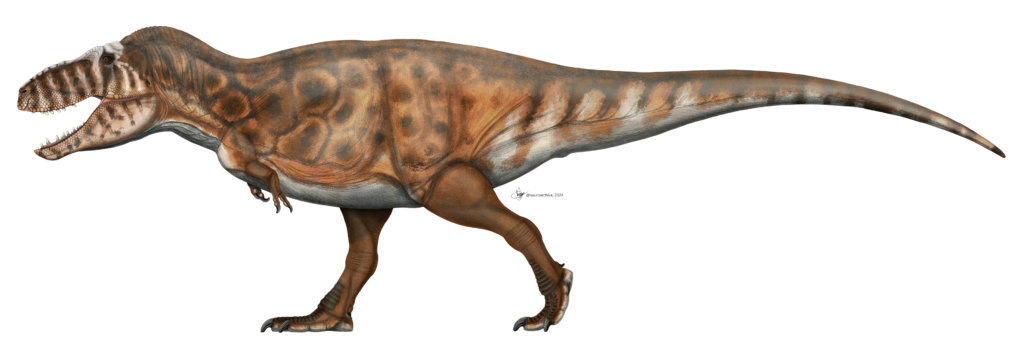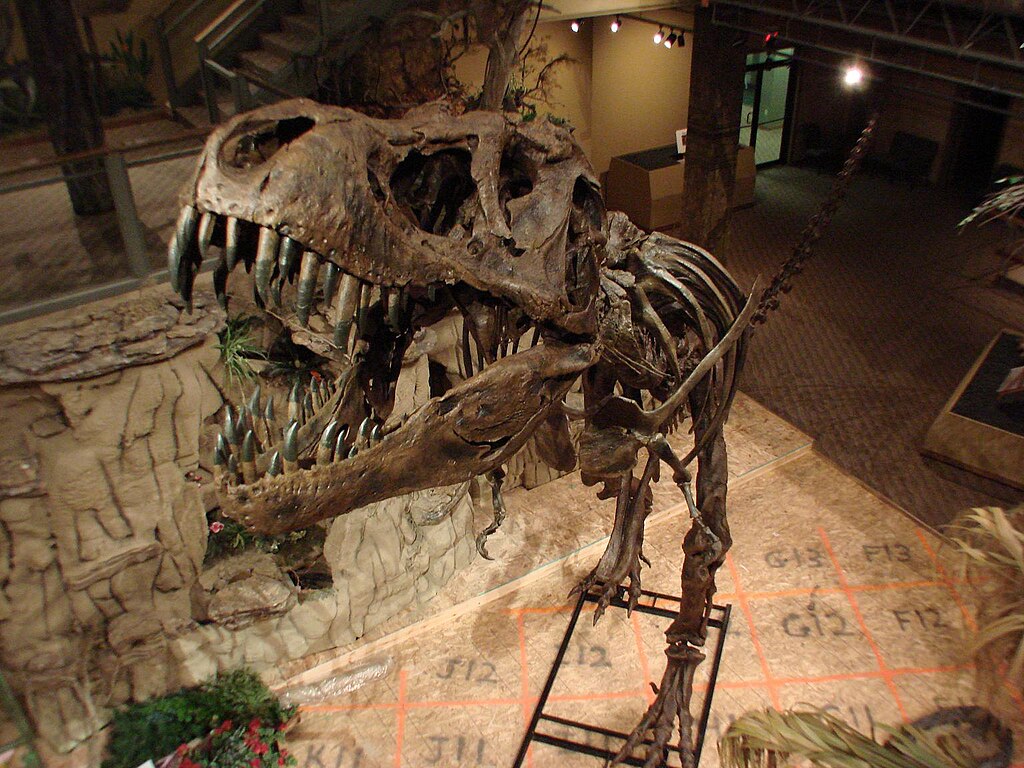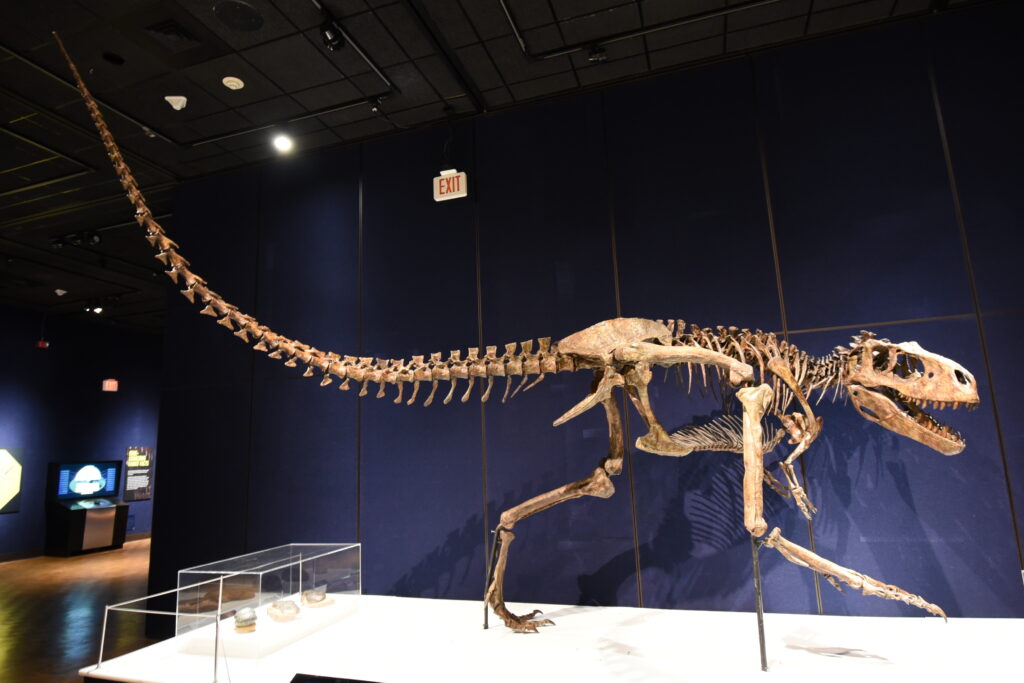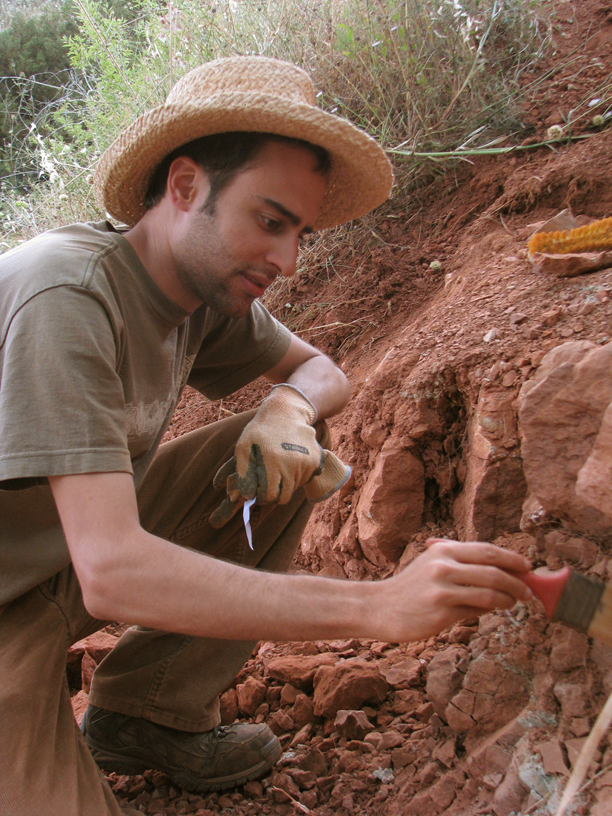In the vast landscape of paleontology, few scientists have managed to bridge the gap between rigorous academic research and public engagement as effectively as Dr. Steve Brusatte. An American paleontologist and evolutionary biologist currently based at the University of Edinburgh, Brusatte has emerged as one of the leading voices in dinosaur science. His ability to weave compelling narratives around fossil discoveries has transformed our understanding of these ancient creatures from static museum displays into dynamic, evolving beings that once ruled our planet. Through his research, books, television appearances, and public lectures, Dr. Brusatte has become the consummate storyteller of dinosaur evolution, bringing these prehistoric creatures to life for audiences worldwide.
Early Life and Academic Journey

Born in 1984 in Ottawa, Illinois, Steve Brusatte developed a fascination with dinosaurs from a remarkably young age, a passion that has fueled his entire career. Unlike many children who outgrow their dinosaur phase, Brusatte’s interest only intensified as he matured. His academic journey began at the University of Chicago, where he earned his undergraduate degree in geophysical sciences. Demonstrating exceptional academic prowess, he continued his education at the University of Bristol in the United Kingdom, where he completed his Master’s degree in paleobiology. The culmination of his formal education came at Columbia University in New York, where he earned his Ph.D. in Earth and Environmental Sciences, studying under renowned paleontologist Mark Norell of the American Museum of Natural History. This comprehensive educational background provided Brusatte with the perfect foundation to become a leading authority in the field of dinosaur paleontology.
Scientific Contributions and Discoveries

Dr. Brusatte’s scientific contributions have significantly reshaped our understanding of dinosaur evolution, particularly regarding the transition from dinosaurs to birds and the events surrounding the mass extinction that ended the dinosaurs’ reign. He has been involved in naming and describing over 15 new species of fossils, including Qianzhousaurus sinensis (nicknamed “Pinocchio Rex” for its elongated snout), a tyrannosaurid discovered in China. His fieldwork has taken him to remote corners of the globe, from the windswept plateaus of Scotland to the rugged badlands of Romania and the fossil-rich regions of China and Brazil. In 2018, Brusatte and his team made headlines with the discovery of remarkably preserved 170-million-year-old dinosaur footprints on the Isle of Skye in Scotland, providing rare evidence of Middle Jurassic dinosaurs. His research methodology combines traditional fossil analysis with cutting-edge computer modeling techniques, allowing for more precise reconstructions of dinosaur anatomy, movement, and evolutionary relationships.
The Rise to Prominence: From Academia to Public Recognition

While many paleontologists remain primarily within academic circles, Dr. Brusatte has skillfully navigated both the scholarly world and public domain. His ascent to public prominence began with his scientific publications in prestigious journals such as Nature and Science, establishing his credibility within the scientific community. However, it was his gift for communication that truly set him apart. Early in his career, Brusatte recognized the importance of making scientific discoveries accessible to the general public. He began writing articles for popular science magazines and accepting invitations for television appearances, where his enthusiasm and clarity quickly made him a favorite among producers and viewers alike. His breakthrough into mainstream recognition came with his consulting work on major documentaries and the BBC series “Walking with Dinosaurs,” where his scientific expertise ensured accuracy while his storytelling abilities helped craft compelling narratives about prehistoric life. This combination of scientific rigor and communication skills has made him one of the most recognizable paleontologists of his generation.
“The Rise and Fall of the Dinosaurs”: A Literary Triumph

In 2018, Dr. Brusatte published what would become his most influential work to date: “The Rise and Fall of the Dinosaurs: A New History of a Lost World.” This book represents the perfect synthesis of Brusatte’s scientific knowledge and storytelling prowess, presenting dinosaur evolution as an epic saga spanning millions of years. Unlike traditional scientific texts, the book weaves personal anecdotes from fossil hunting expeditions with cutting-edge paleontological research, creating a narrative that feels both informative and intimate. The book became an instant bestseller, spending several weeks on The New York Times Best Seller list and earning widespread critical acclaim for its ability to make complex science accessible without sacrificing accuracy. Through vivid descriptions and carefully crafted narratives, Brusatte guides readers through the Mesozoic Era, from the earliest dinosaur ancestors to their eventual extinction, presenting dinosaurs not as movie monsters but as real animals adapting to changing environments. The success of “The Rise and Fall of the Dinosaurs” cemented Brusatte’s reputation as both a leading scientist and a gifted science communicator.
Research Methodology and Innovative Approaches

What distinguishes Dr. Brusatte’s scientific approach is his integration of traditional paleontological methods with innovative technologies and interdisciplinary collaboration. Unlike earlier generations of paleontologists who relied primarily on descriptive anatomy, Brusatte employs quantitative techniques such as geometric morphometrics and phylogenetic comparative methods to analyze fossil data with statistical rigor. His research frequently incorporates CT scanning technology, allowing for detailed examination of internal fossil structures without damaging precious specimens. Brusatte has been particularly innovative in using computational modeling to test hypotheses about dinosaur biomechanics, growth rates, and evolutionary patterns. His collaborative approach extends beyond paleontology, regularly working with geologists, climate scientists, and even aerospace engineers to gain new perspectives on dinosaur biology. This methodological flexibility allows him to extract maximum information from the fossil record, revealing details about dinosaur lives that would have been impossible to determine through traditional methods alone.
Television Presence and Media Engagement

Dr. Brusatte’s ability to translate complex scientific concepts into engaging television content has made him a fixture on documentary programs about prehistoric life. His most notable television work includes serving as the scientific consultant for the BBC’s landmark series “Planet Dinosaur” and appearing as a featured expert on numerous programs for National Geographic, Discovery Channel, and PBS. Unlike some scientists who appear uncomfortable on camera, Brusatte exhibits a natural ease and enthusiasm that resonates with viewers. His television appearances typically combine field demonstrations, where he explains fossil discoveries in their original contexts, with studio segments featuring detailed explanations of dinosaur biology and behavior. Beyond television, Brusatte maintains an active presence across various media platforms, including podcasts, online videos, and social media, where he regularly shares updates about discoveries and behind-the-scenes glimpses of paleontological fieldwork. This multimedia approach allows him to reach diverse audiences, from dedicated dinosaur enthusiasts to casual viewers encountering paleontology for the first time.
Teaching Philosophy and Mentorship

As a professor at the University of Edinburgh, Dr. Brusatte has developed a teaching philosophy centered on experiential learning and scientific curiosity. He believes that paleontology is best taught in the field, where students can experience the thrill of discovery firsthand. His undergraduate courses frequently include field components, taking students to fossil-rich sites across Scotland and beyond. In his graduate mentorship, Brusatte emphasizes the importance of developing both technical research skills and effective science communication abilities. Many of his former students have gone on to establish successful careers in paleontology, crediting his mentorship with helping them navigate both the scientific and public aspects of the field. Brusatte maintains relationships with students long after they’ve completed their formal education, creating a global network of collaborative researchers. His commitment to education extends beyond the university setting through his involvement in numerous outreach programs designed to inspire the next generation of paleontologists, particularly focusing on increasing diversity within the field.
The Art of Dinosaur Storytelling

What truly sets Dr. Brusatte apart is his exceptional ability to transform scientific information into compelling narratives that capture the imagination. His approach to dinosaur storytelling revolves around three key elements: humanizing the research process, contextualizing discoveries within broader evolutionary narratives, and emphasizing the dynamic nature of scientific knowledge. When discussing new fossil finds, Brusatte often shares the personal stories behind the discoveries—the challenges faced during expeditions, the moments of realization, and the collaborative efforts that made the research possible. This humanization makes paleontology more relatable to non-scientists. Additionally, rather than presenting dinosaur facts in isolation, he weaves them into comprehensive evolutionary stories that explain how and why dinosaurs changed over time. Perhaps most importantly, Brusatte embraces scientific uncertainty in his storytelling, openly discussing competing hypotheses and explaining how discoveries continually reshape our understanding of prehistoric life. This approach presents science as an ongoing adventure rather than a static body of knowledge.
Debunking Dinosaur Myths and Misconceptions

Throughout his career, Dr. Brusatte has dedicated considerable effort to correcting popular misconceptions about dinosaurs that persist in public consciousness. He frequently addresses the outdated image of dinosaurs as slow, cold-blooded, tail-dragging reptiles, presenting the current scientific consensus that many dinosaurs were active, potentially warm-blooded animals with complex behaviors. Another myth he consistently debunks is the notion that dinosaurs were evolutionary failures that died out due to inherent biological inadequacies, emphasizing instead their 165-million-year reign as one of Earth’s most successful animal groups. Brusatte has been particularly vocal about correcting media portrayals of dinosaurs, critiquing scientific inaccuracies in popular franchises like Jurassic Park while acknowledging their importance in generating public interest in paleontology. His approach to myth-busting is never condescending but rather enthusiastic, sharing accurate information as even more fascinating than the misconceptions. This positive approach to science communication has proven effective in updating public perceptions of dinosaurs based on current research.
Current Research and Future Directions

Dr. Brusatte’s current research focuses on several cutting-edge areas within paleontology, particularly the evolutionary transitions that defined dinosaur history. He is actively investigating the factors that allowed dinosaurs to become dominant after the end-Triassic mass extinction, examining fossil evidence from this critical period. Another major focus is the dinosaur-bird transition, where his team is studying newly discovered feathered dinosaur specimens that illuminate this evolutionary pathway. Brusatte is also directing research on the final days of non-avian dinosaurs, using advanced geological techniques to better understand the immediate aftermath of the asteroid impact that triggered their extinction. Looking forward, he has expressed interest in expanding the application of genomic techniques to paleontological questions, potentially extracting molecular data from exceptionally preserved fossils. Brusatte’s research increasingly incorporates climate modeling to understand how dinosaurs responded to ancient climate changes, research that has implications for understanding how modern animals might respond to current climate change.
Public Lectures and Science Communication Philosophy

Dr. Brusatte maintains an active schedule of public lectures that take him around the world, speaking to audiences ranging from elementary school students to professional conferences. His lecture style is characterized by a conversational tone, striking visual aids, and a careful balance of scientific detail with accessible explanations. Rather than simply presenting information, Brusatte structures his talks as narratives with clear story arcs that keep audiences engaged from beginning to end. He frequently incorporates fossil casts or replicas as tangible connections to the prehistoric world, allowing audience members to experience a physical connection to his subject matter. Underlying all his communication efforts is a philosophy that science belongs to everyone, not just specialists with advanced degrees. In interviews, Brusatte has expressed his belief that scientists have a responsibility to share their research with the public, particularly when that research is supported by taxpayer funding. This democratic view of science communication informs both the content and style of his public engagement efforts.
Collaborative Work and Professional Relationships

Throughout his career, Dr. Brusatte has fostered extensive collaborative networks that span continents and disciplines, believing that the most significant scientific advances emerge from diverse perspectives working in concert. His publication record demonstrates co-authorship with scientists from over 20 countries, reflecting both the global nature of paleontological research and his commitment to international scientific cooperation. Particularly notable are his long-standing collaborations with Chinese paleontologists, which have resulted in numerous important discoveries of feathered dinosaurs and early birds. Beyond academic circles, Brusatte maintains productive relationships with museum curators, fossil preparators, and amateur fossil collectors, recognizing the valuable contributions these individuals make to paleontological knowledge. His collaborative approach extends to artists and illustrators specializing in prehistoric life reconstructions, working closely with them to ensure scientifically accurate yet visually compelling representations of ancient animals. These diverse professional relationships enrich Brusatte’s research and communication efforts, allowing him to present multiple perspectives on dinosaur science.
Legacy and Impact on Paleontology

Though still in the prime of his career, Dr. Brusatte has already made a substantial impact on both the scientific field of paleontology and public understanding of prehistoric life. His scientific contributions have helped resolve long-standing questions about dinosaur evolution, particularly regarding the origin of birds and the end-Cretaceous extinction event. His research methodology, combining traditional comparative anatomy with cutting-edge quantitative approaches, has influenced a generation of younger paleontologists who now employ similar techniques. Perhaps his most significant legacy lies in demonstrating that rigorous scientific research and effective public communication can coexist and reinforce each other. Before Brusatte and contemporaries like him, many scientists viewed popularization with skepticism, fearing it might compromise their academic credibility. His success in maintaining respected peer-reviewed research while achieving bestseller status as an author has helped legitimize science communication as a valuable aspect of a scientist’s professional activities. Through his students, books, and public appearances, Brusatte has inspired countless young people to pursue careers in paleontology and related sciences, ensuring a vibrant future for dinosaur research.
Conclusion

Dr. Steve Brusatte represents the modern face of paleontology—a scientist who combines meticulous research methodology with an exceptional gift for storytelling. Through his fieldwork spanning multiple continents, his groundbreaking publications, and his engaging public presence, he has transformed our understanding of dinosaur evolution from static museum exhibits into dynamic narratives of adaptation and change. As both an accomplished scientist and gifted communicator, Brusatte exemplifies how the complex stories hidden in ancient rocks can be made accessible without sacrificing scientific integrity. His career demonstrates that in the right hands, science itself becomes the most compelling story of all—an ongoing adventure of discovery that connects us to Earth’s remarkable past while illuminating the processes that continue to shape life on our planet.




